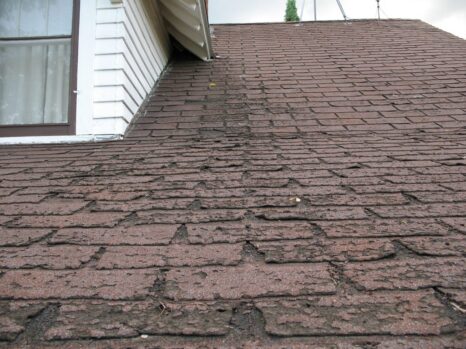The smart home concept is gaining immense popularity over the past couple of years. Having a smart assistant such as Amazon’s Alexa or Google Assistant can be enjoyable as you can voice command it to turn on/off your smart lights or check the weather.
But, here’s the real question, do smart home devices save you money? As a matter of fact, your smart device has the ability to do more than simply making your day-to-day life more convenient. It may sound strange, but the few hundred dollars spent on connected smart gadgets can actually lower your monthly bills.
From having a better heating and cooling system to more energy-efficient lighting, these smart home devices can help in saving your utility bills, costs people usually can’t avoid.
It’s important to check the TXU plans to make sure that you have the electricity plan that best supports your smart home gadgets without raising your power bill.
Let’s take a look at such smart home devices.
Smart Sprinklers
Smart sprinklers aren’t as popular as other smart home devices, but believe it or not, they’re extremely helpful in cutting down your monthly utility costs. There’s no doubt that lawns require a lot of maintenance, and take a lot of water, energy, and time to keep them looking fresh.
This gets even tougher in a highly variable and arid climate. Moreover, it’s not easy to gauge just how much water does the lawn and the plants need, and many people tend to overwater them, hence resulting in excessive wastage of water.
Smart sprinklers can save your water bills by giving you the ability to run them only when it’s needed. Moreover, if you invest in a highly programmable and customizable smart sprinkler system, you’ll not just conserve water, but nurture the soil properly.
Smart sprinklers adjust the water pressure according to the weather. You now no longer have to run to switch off your traditional sprinkler if it’s watering while it starts raining. Simply off your smart sprinkler through its app on your smartphone.
The Rachio 3 Smart Sprinkler is one of the best among its competitors. You can purchase it at FirstEnergy for $280.
Smart Thermostats
Smart thermostats have the ability to learn your routine and stop you from heating or cooling spaces that aren’t occupied. Climate control generally makes up a good portion of your home’s overall energy bills, hence better control could result in significant savings.
However, it’s important you know that smart thermostats can’t actually reduce the amount of energy intake to heat or cool the house. The total amount of energy that your smart thermostat expends depends on your temperature settings, habits, size of the house, the particular HVAC system you have, among others.
To save costs on your utility bills, combine the smart thermostat with certain climate-controlling self-efforts such as, checking the seals on your windows and doors, better insulation, and having warmer clothes on during the winter.
Smart thermostats like the Google Nest can be controlled via any internet-connected device. Because these devices are Wi-Fi connected, they can be controlled from anywhere, so you no longer have to worry about your thermostat being on if you left home in a rush.
You can purchase the Google Nest Learning Thermostat at FirstEnergy for $220.
Smart Bulbs and Smart Plugs
LED bulbs are undoubtedly more efficient as compared to traditional incandescent, and it doesn’t matter if they’re smart or not. If you’re looking to save big on your monthly electric bills, LED bulbs are the perfect place to begin.
Due to more and more people opting for smart LED bulbs, they’re no longer as expensive as they used to be. A number of years back, one would consider a million times before investing in one, but now there are so many smart lighting starter kits that are reasonably priced.
Smart bulbs such as the Philips Hue ones can be controlled through its app on a smartphone or tablet, or with voice command, if you have a voice assistant at home. If you’ve decided to upgrade your lights to smart lights, you can save energy by having them turned off remotely, if they’ve been left on.
Moreover, another way to start smart when wanting to automate your home is to get smart plugs first. These smart outlets turn any appliance or device plugged into them into a smart one. Similar to smart blubs, the smart plug can also be controlled remotely via its app.
Smart Water Leak Detectors
If you’ve noticed a sudden increase in your water bills, you may want to check under the sink or your washing machine for a potential water leak. Almost every other household experiences water leaks at some point.
A smart water leak detector can heavily reduce the impact of water leak problems by sending an alert to your smartphone through its app. Even if you’re not home and there’s a water leak, you can call the plumbing service to be home as soon as possible.
Moreover, it can also detect if the water pipes are starting to freeze before they eventually burst. Recent events in Texas prove the value of this feature.
In Conclusion
All the above-mentioned smart home devices can easily be integrated with any smart home assistants, and further controlled via Wi-Fi connected devices. Once you are beginning to form a connected smart home, the above devices will reduce energy usage.











![How to Fix Outlook [pii_email_9ba94c086590853d8247] Error Code](https://ukrdengi.com/wp-content/uploads/2021/08/Microsoft-Outlook-Code-pii_email_9ba94c086590853d8247-1-270x225.jpg)
![[pii_email_f744b3ae828b2f819cbd] error](https://ukrdengi.com/wp-content/uploads/2021/09/pii_email_f744b3ae828b2f819cbd-270x225.jpg)
